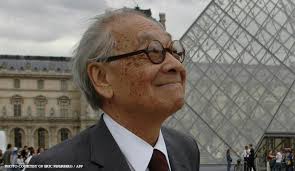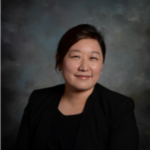Lecture Date: February 11, 2021
The JON Properties/Van Zandt Restorations Lecture

Chinese-born American architect I.M. Pei (in full Ieoh Ming Pei, 1917-2019) was one of the most acclaimed and world-famous architects of the 20th and 21st century. He was awarded the 1983 Pritzker Architecture Prize for his iconic design for the east building of the National Gallery of Art (1968-78) in Washington, D.C., and the underground reception area and the central glass pyramid of the Louvre in Paris, France (1983-93). After earning his B.A. at the Massachusetts Institute of Technology and his M.A. at the Harvard Graduate School of Design, he became well-known for his use of structural concrete as a smooth, ‘men-made’ stone and contemporary interpretation of the Gesamtkunstwerk (total work of art) and the International Style. The National Gallery of Art east building is quintessential I.M. Pei with the walls clad with continuous and smooth Tennessee pink marble, the use of architectural concrete molded by skilled cabinetmakers, and the application of the isosceles triangle for all architectural forms and smaller details. Pei’s buildings cover a wide range of skyscrapers, university buildings, and art museums in and outside of the U.S., which have been built in refined geometrical forms and demonstrate harmonizing effects with the surrounding skylines, cityscapes and landscapes.
For further reading on I.M. Pei, see an op-ed by Suzie Kim, published in the Free Lance-Star.
Speaker: Suzie Kim

Dr. Suzie Kim is an Assistant Professor of Asian Art History in the Department of Art & Art History at the University of Mary Washington. Dr. Kim specializes in the history of modern East Asian art and architecture. She holds a B.A. in western history from Korea University, Seoul, Korea and a M.A. in art history from Hongik University, Seoul, Korea. She received her Ph.D. in art history from University of Maryland, College Park in 2015. Her research investigates how Constructivism and the International Style became the primary source for a multifaceted cultural phenomenon in Japan and Korea from the 1920s onward. Her wider areas of expertise include modern Korean and Japanese architecture, North Korean architecture, postcolonial theory, and cross-cultural interactions between European and East Asian avant-garde movements. She has published articles on modern Korean architecture and contemporary Korean art and is currently working a book titled Between Utopia and Distopia: Architecture of Pyongyang in the 1950-60s (to be published in 2021).